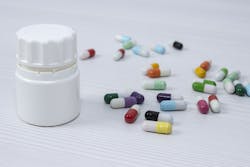Report highlights 'fragile and failing' antibiotic pipeline
A report on antibacterial innovation from the Biotechnology Innovation Organization (BIO), released recently concludes that the breadth and the novelty of the clinical antibacterial pipeline is insufficient to meet the growing threat of antibiotic-resistant pathogens, with only 64 new chemical entities (NCEs) in clinical trials — 44 when candidates for tuberculosis and Clostridioides difficile are removed, according to a news report from the Center for Infectious Disease Research and Policy (CIDRAP) at the University of Minnesota.
Forty-four drug candidates might seem like a fair number. But a comparison to COVID-19 and oncology drugs provides a stark example of how thin the clinical pipeline for new antibiotics really is. In 2020-21, there were 260 COVID-19 antivirals in clinical development. For breast cancer alone, the number was 158.
Ultimately, the report comes to the same conclusion as previous analyses of the antibiotic pipeline: The pipeline is thin because the market for new antibiotics is broken, and investors are unwilling to put money behind drug candidates that show little promise of return on investment and behind small companies that might go bankrupt.
Why is the market broken? Because, unlike most new drugs, new antibiotics are used sparingly and reserved mainly for cases in which older antibiotics prove ineffective. In addition, antibiotics are generally undervalued by hospital reimbursement systems relative to the societal benefits they provide, and those reimbursement systems often discourage use of novel antibiotics even when they are the appropriate treatment for an infection.
Because of the low return on investment compared with other drugs, most large pharmaceutical companies have abandoned antibiotic research and development (R&D) for more lucrative drugs, leaving the space to smaller companies. The report estimates that small companies discovered 81% of the antibiotics currently in the clinical pipeline.

